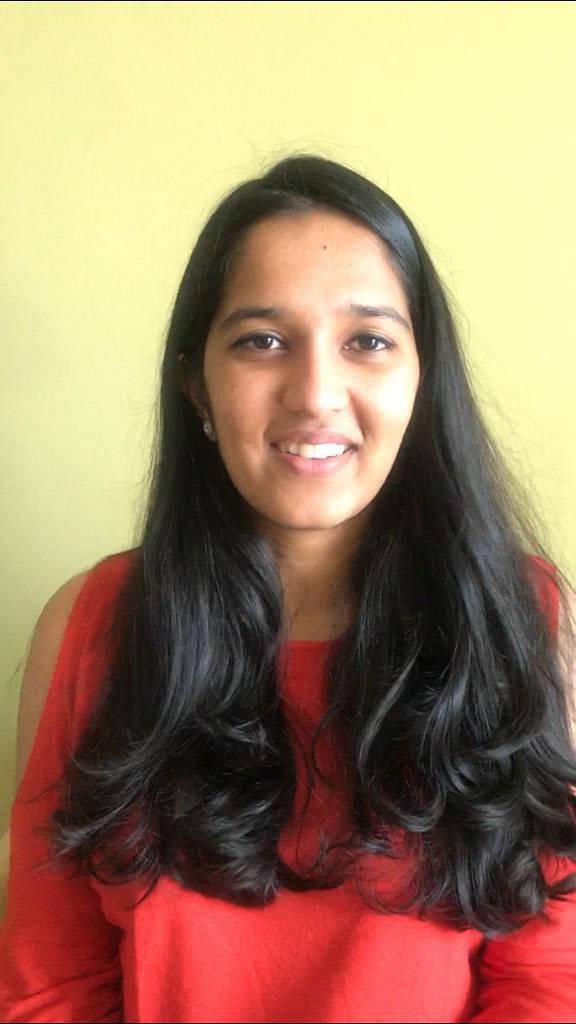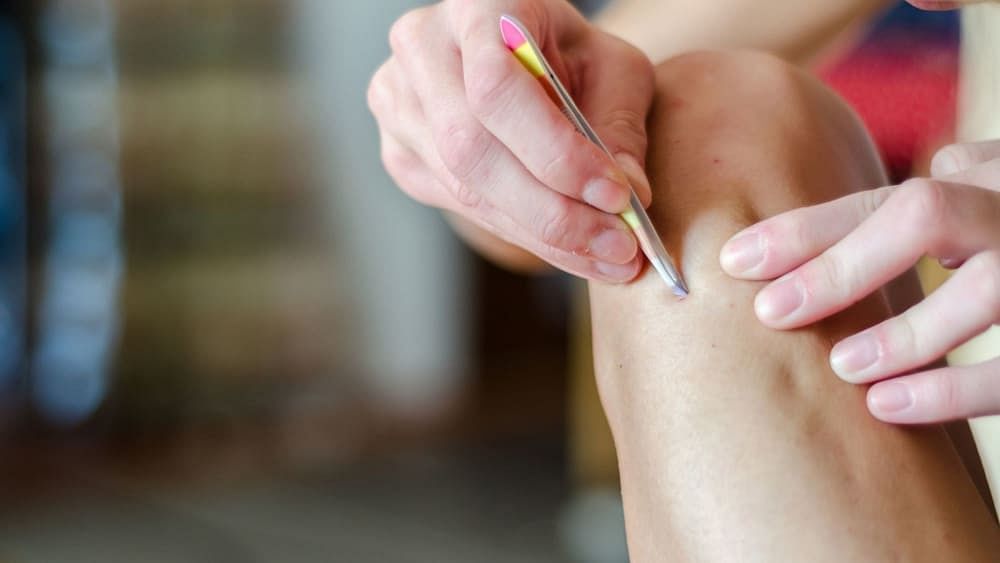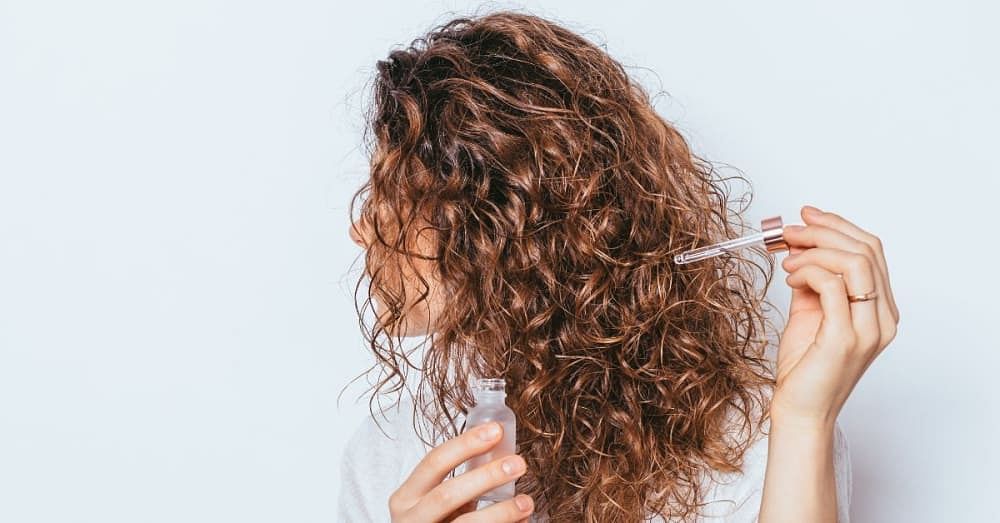Ingrown hair is a strand of hair growing inside the skin, causing cysts. This is also referred to as cystic ingrown hair. Furthermore, these pink, itchy bumps arise when dead skin clog hair follicles.
Ingrown hair bumps are caused as a result of curly hair removal from face, neck or legs.
What Causes Ingrown Hair?
Improper shave, wax or tweeze curls can leave your hair sharp and coarse. This part of hair may curl inside the skin and re-grow .
Ingrown hair from shaving can cause swelling and lead to skin irritation causing bumps on your skin.
If you cut curly hair too short or tweak or pluck it, the pointed end of hair causes hair ingrowth. To add woes, dry skin or tight clothes might make the situation even worse, resulting in more bumps and pus-filled lesions on the shaved part.
Though these ingrown hairs are mostly benign, some conditions may require medical attention.
Symptoms of Ingrown Hair
So, how do you identify if the skin condition is due to the hair ingrowth? Well, below given are some symptoms to identify ingrown hair among women.
Some symptoms of ingrown hair are:
- Itching and tenderness on the site of shave is a symptom of ingrown hair
- You might notice a curly hair at the centre of the bump.
- Red bumps may arise and spread over the shaved area after the hair grows back as a symptom of ingrown hair
- Development of pustules or pus-filled lesions, causing discomfort on friction is a symptom of ingrown hair
In some cases, you may even notice the hair under skin is causing problems and is embedded in the skin.
Types of Ingrown Hair
If you can’t figure out the difference between a pimple and a cystic ingrown hair, you must know there are only a few sites where hair ingrowth can occur.
This includes ingrown hair on armpits, face and neck area, pubic area and groin, and legs. Ingrown hair after waxing or shaving may form a cyst or a pus-filled lesion, especially in the pubic area.
Ingrown Hair on Legs
Women experience lots of ingrown hair on legs. After shaving or waxing the leg, a bump may form on the waxed area. This might cause discomfort due to friction when you wear trousers.
Ingrown hair on Breasts
Yes! You heard it right. This could make it hard to wear clothes and worse if you sweat inside them.
Ingrown Hair on Vagina
Female infected ingrown pubic hair is real. Pubic areas are one of the most vulnerable areas for ingrown hair. We know how much this hurts, as your genitals are all the more sensitive. In fact, did you know that there is ingrown hair on labia too? Where else does it grow? Have you ever experienced an ingrown hair bikini line? There could also be ingrown hair on your thigh. It may even become red and bumpy. One of the reasons for this could be aggressive, dry shaving.
Ingrown Hair Under Armpit
Ingrown infected hair in armpit can be painful. These may form lumps underneath and cause more irritation on exposure to sweat and deodorant.
Ingrown Hair on Butt
Shaving or waxing your butt area can form ingrown hair. Sometimes, the hair under the skin may develop on its own due to excessive pressure from your underwear or clothing.
Besides this, dead skin may clog, or coarse hair may even push back inside causing ingrown hair on thigh area and on the groin, forming large cysts.
Ingrown Hair in Women
Improper shaving techniques or dry and aggressive shaving among women may cause ingrown hair after shaving. This pushes back the hair inside the skin, clogging it and resulting in a cyst or a bump.
Infections Due to Ingrown Hair
Some hair growing inside skin may go away on their own while some may even cause infection. That’s when it needs special attention.
Some infected areas may result in an infected ingrown hair with the dead skin cells clogging up the hair follicles. The infection is more likely to occur in the areas where grown hair gets trapped under the skin.
In extreme cases, these infections may turn into a Staphylococcus infection within an ingrown hair. It can cause pus and boils when the bacterium staph penetrates into the skin.
Infected hair may also cause certain conditions including razor bumps, hyperpigmentation, permanent scarring and hair follicle destruction.
Treatment of Ingrown Hair
If the skin around the ingrown hair gets infected, it is better to get an ingrown hair remedy. Your doctor might want you to opt for the ingrown hair removal or provide you with some ingrown hair solution without removing it.
Doctors can use sterile needles to scrape or release the hair embedded into the skin or you might be prescribed Retinoids to remove dead skin cells.
Some ingrown hairs do not require special attention. Thus, there are various home remedies for ingrown hair treatment.
- Tea tree oil diluted with water can be applied on the infected area which nullifies the infection.
- Make use of ingrown hair solutions such as hydrocortisone cream or oatmeal lotions to relieve itching.
- Use of skin moisturisers containing salicylic acid and glycolic acids alleviates skin infections.
Tips to Avoid Ingrown Hair
Prevention is better than cure. Proper shaving techniques and skin hydration can reduce the risk and prevent ingrown hair among women.
Before shave or wax, here are few tips to avoid the ingrown hair under your skin:
- Scrub Exfoliation also takes out the ingrown hair. Gentle exfoliation using a scrub or washing with mild soap and water to hydrate skin.
- Always shave in the direction where your hair is growing.
- Use a shaving lotion or wash or rinse your blade with water to avoid dry shaving.
- Make sure to use a sharp razor before shaving.
- Use hair trimmers for quick and safe hair removal.
Alternatively, you can make use of electric razors or clippers or a hair removal cream to reduce the risk of ingrown hair.
Conclusion
If you notice hair growing inside skin, you should apply some gel or cream to avoid dryness or clogging. Some occasional ingrown hairs are fine, but it is better to consult a doctor if that occurs more frequently.
Furthermore, keep your skin moisturised and avoid unnecessary shaving.
Stay tuned for more related content!












